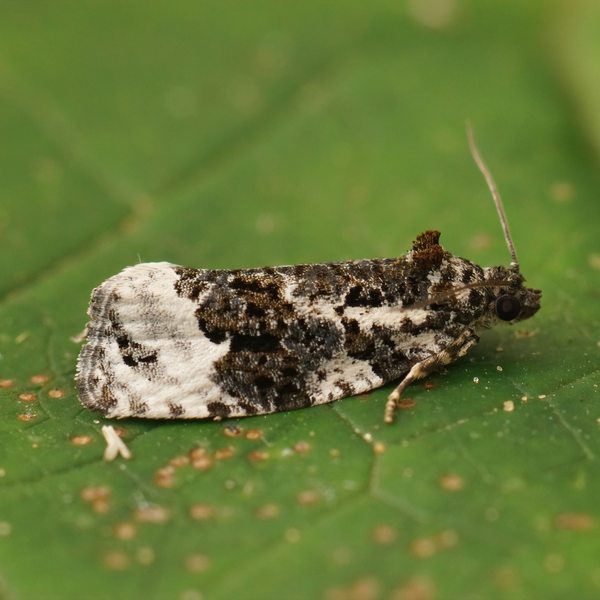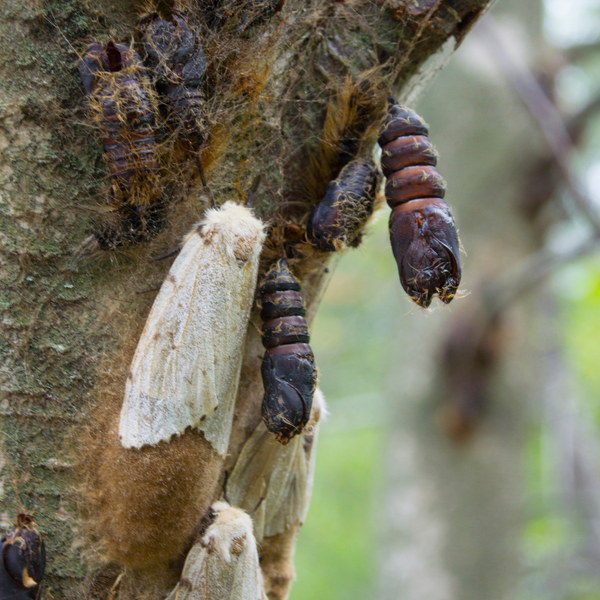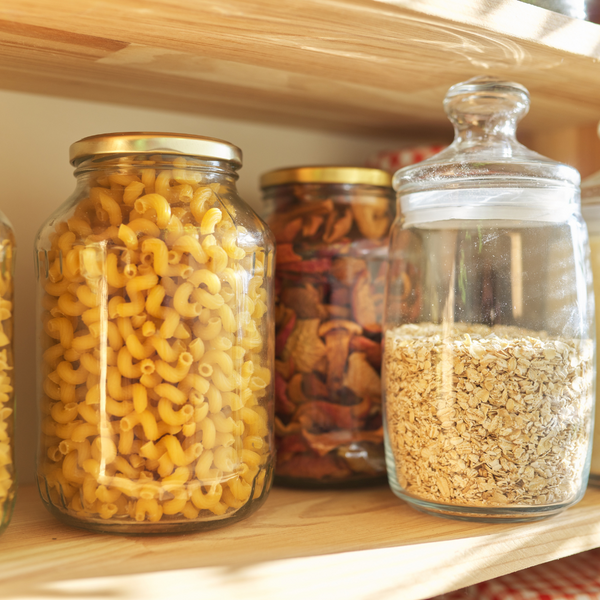
Expert Guide on How To Get Rid Of Moths Yourself
Share
Discovering moths in your home can cause concern. While moths may seem less intimidating than rats or other pests, they can still cause significant damage. From ruining clothes and textiles to contaminating your food, moths can quickly become a minor nuisance to a major concern.
Although professional pest control services offer moth control, these options can be expensive. Tackling a moth infestation yourself might seem daunting at first, but with the right products and some sound advice from our team at PestBuddy.co.uk, you can manage the moth situation efficiently and affordably.
Our expert guide on DIY moth control provides all the information you need to understand moth behaviour, recognise signs of an infestation, and select the appropriate DIY moth control products. With our advice and top-quality solutions, you'll be equipped to protect your home and belongings from moths quickly and effectively.
Types of Moths
Did you know that there are more than 870 moth species in the UK, although many of them are quite scarce? It helps to know what features to look for when trying to identify moths, and learning a bit about the family and species helps too. The size of the moth and the shape of its wings when resting are a good way to start. Some moths are wide, while others are narrow. In some moths, the wings are tucked over one another, while others lie flat. Here are three of the most common types of moths that you are likely to encounter in your UK home.
Common Clothes Moth (Tineola Bisselliella)
Common clothes moths are sometimes known as webbing clothes moths because of the fine silk webbing that they leave on clothes. These moths feed entirely on animal fibres such as wool, fur, silk, and leather. All of these materials contain keratin, which is fibrous and easy for moths to digest. Clothes moths are small and beige and look very similar to the grain moths that infest food bins. Common clothes moths have narrow wings that are fringed with small hairs. They prefer dark, quiet areas and are seldom seen. This means that they can cause a lot of damage to clothing, linen, and furnishings before they are detected.
Adult clothes moths find suitable fabric on which to lay 40 to 50 eggs the size of pin-heads. These eggs hatch into hungry, fabric-eating larvae. It can take between one month and two years for the eggs to hatch, depending on species, temperature, and food availability. Due to their quick reproduction cycle, it's important to learn how to stop moths from eating your clothes.

Indian-meal Moth (Plodia interpunctella)
Indian-meal moths are otherwise known as hanger-downers, pantry moths, weevil moths, grain moths, or flour moths. These moths are not native to India but get their name from feeding on Indian meal, or cornmeal. The top half of their wings are a light, creamy colour, with brown and bronze colouring on the bottom half. The adult moths are between 8 and 10mm long, and the larvae are a creamy-white colour with a brown head.
They are nocturnal, so they hide in dark places during the day. Females lay 60 to 400 eggs, always on food, and the larvae will hatch in 2 to 14 days. The larvae produce a silky thread that results in stringy bits of food, which is a sure sign of an infestation. The larvae turn into pupae, and after 15 to 20 days, will hatch into adult moths.
Their larvae are known for being able to bite through plastic and cardboard, so it may be best to store your grains in sealed glass containers.

White-shouldered House Moth (Endrosis Sarcitrella)
Found in most countries today, the white-shouldered house moth is drawn to light sources. They like to live inside buildings. In particular, they are often found near food sources such as grain storage areas, kitchens, and pantries. This moth has distinct white shoulders and wings that are a greyish colour with dark patches. The adult female lays up to 200 eggs that hatch in one to two weeks. The larvae live on plant and animal matter, grains and cereals, dried fruit, seeds, rotting wood, potatoes, wool, old textiles, and even guana. Because of their wide dietary inclinations, white-shouldered house moths pose a risk to food and animal-based fabric items in your home.

Moth Behaviour
What is the Moth Lifecycle?
Eggs
Moths begin life in small yellow or green eggs. They lay between 40 and 200 eggs at a time, depending on the species. The eggs take between 1 and 20 weeks to hatch, depending on temperature and feeding conditions.
After a week or two, most egg types hatch into tiny caterpillars which are also known as larvae.

Caterpillars (or Larvae)
Caterpillars (or larvae) are small, worm-like creatures that can come in a variety of colours including green and creamy white.
The caterpillars sometimes eat their discarded eggs, and then they begin to eat the material on which the eggs were laid.
Caterpillars shed their skin as they grow larger, sometimes moulting four to five times in two weeks, until they pupate.

Pupa
Some caterpillars spin cocoons of silken thread around themselves, while others just change shape with a hard outer shell to protect the pupa. Inside the pupa, changes occur, and soon a beautiful moth emerges into the world. Within an hour, the moth’s wings have strengthened, and it is ready to fly off in search of a mate.
What Do Moths Eat?
Adult moths don’t feed, but they lay their eggs near or on their preferred food sources so that the larvae have a source of food when they hatch.
Depending on the moth type, they either feed on animal-based fabrics such as wool and silk or they eat grain, dried fruits, cereals, seeds, rotting wood, and sometimes animal detritus. Some moths, such as the white-shouldered house moth, can be found eating both food and animal-based materials.
Identifying Signs of a Moth Infestation
Usually, you will be able to identify an infestation by the damage done, which means that it’s too late to prevent it from happening. Moths don’t cause the damage, and the larvae are not always easy to spot.
Larvae can be found unhatched or in the form of small caterpillars, eating your clothing and food. They leave behind small silken cocoons that can be shaken out of clothing.
Clothing and Fabrics
Visible Holes in Fabrics
Hold your wool, fur and silk garments up to the light, and you will notice small irregularly shaped holes. Also, check your wool and silken carpets for tiny holes.

Animal-based materials
Brown house larvae prefer leather or feathers, so check behind and underneath leather couches. If you have feathered articles, give them a good shake outside in the sunlight to see what falls out.
Silken Threads or Webs
Moths spin silken threads that they use to move and feed, often in hidden crevices.
Pupal Casings or Shed Larval Skins
Moth larvae shed these casings as they grow, leaving them as a sign of an infestation.

Kitchen and Food
Live or Dead Moths in Your Food
You may spot moths flying out when you open a container, or you might find them at the top of the ceiling. You may also find dead moths in the food. White-shouldered house moths and Indian meal larvae can also be noticed by the stringy bits they leave behind.
Webbing or Silk
Similar to clothes moths, pantry moths will leave silk webbing behind in the food they infest.

Pupal Casings
While less frequent in the food than clothing finding pupal casings within your stored foods is still possible.
Preventing Moths
Preventing moths from making themselves comfortable in your home is the best form of moth control. If you see tiny moths flying around, swat them to stop them from getting up to no good.
Once inside, moths will find places to hide: under beds, in spare bedrooms, or in seldom-used cupboards, where there is minimum disturbance.
Regular Cleaning and Inspections
Cleanliness is key. Vacuum and shake out carpets and curtains regularly, giving them a good wash or dry cleaning every so often, particularly if they contain silken or woollen materials.
Check clothing that is susceptible to moths, such as woollen jerseys, coats, and scarves. Clean clothing and linen cupboards thoroughly regularly. A good time to do this is when the seasons change and it’s time to swap out your summer and winter clothes. Remove all clothes and wash shelves with vinegar and water solution, making sure that you get into the cracks and corners that may be hiding eggs. Leave them to dry out before replacing the clothes. Make sure clothes have been washed before packing them away for a season.
If this seems like a daunting task, you can tackle a few shelves at a time, but if you suspect a moth infestation, it is better to do the entire cupboard, and perhaps even your entire home.
You can wash and store woollen jerseys and scarves in plastic or fine mesh covers that are breathable but mothproof. Give them a good shake-out when winter arrives again.

Use Airtight Containers
Store all food including grains, pulses, and spices in airtight containers. Glass or hard plastic jars are preferable, as many pests can eat their way through plastic bags and cardboard boxes. Before using food, check for small insects or stringy bits stuck to the sides or top of the container.
Don’t leave food lying around overnight, and keep countertops, cupboard shelves, and floors clean.

Store Clothes Properly
Closets and drawers must be organised and cleaned regularly otherwise you will create safe spaces for moths.

Natural DIY Moth Control
It’s always preferable to stop pest infestations with the use of natural products before trying out chemical options. Natural products and scents are environmentally friendly and better for your health.
Cedarwood, Lavender and Other Herbs and Spices
Moths do not like certain scents such as cedarwood and lavender. The great news is that many such products are relatively inexpensive and leave your home smelling great. You may also wish to consider using scented coat hangers, sachets, oils, and sprays that can be safely used in clothing and linen cupboards.
Before storing clothes for the winter or summer months, fold a few sprigs of dried lavender or bay tree into woollen jerseys. Alternatively, fill small muslin bags with strong-smelling herbs and spices. Great smells for repelling moths include rosemary, thyme, cinnamon and cloves. Once ready, place the bags in clothing and linen cupboards.
Lavender-scented linen sprays can be used on curtains and carpets to prevent moths from settling in. Various natural repellents are available in spray form for use in the kitchen too. Check the ingredients before you buy them to make sure that they are natural.

Vacuum and Clean Regularly
Moths are drawn to soiled areas where body oils, food stains, and old sweat reside. Regular cleaning and vacuuming reduces their interest in those areas.
Launder or Dry Clean Infested Items
Wash infected items in hot water or have them dry cleaned. You can also place items in a plastic bag and freeze them for 2-3 weeks. Freezing kills eggs, larvae and adult moths that might be hiding, and is unlikely to affect your garment.
Moth Traps
Moth traps are used by entomologists to trap live moths for research, which means that they are harmless devices. Moths are naturally attracted to light, so most traps consist of lights in a box. When the moth flies into the box, it falls downward towards the light and cannot escape.
Chemical Solutions for Moth Control
There are many chemical moth control products on the market. This includes sprays, sticky traps, powders, mothballs, paper strips, and shelving paper. These use chemicals to attract and kill moths.
We recommend considering solutions that use non-toxic chemicals first. These are generally safer in homes, especially around children and pets, provided they are kept out of reach.
Before buying any of these products, you should educate yourself on the ingredients being used, and what the side effects may be. Read the instructions and follow them carefully when using the product.
Pheromone Moth Trap
The least harmful of the chemical solutions is the non-toxic pheromone moth trap which consists of a sticky substance containing pheromones to attract male moths that are searching for a mate. Pheromone moth traps are most commonly used for clothes moths however there are solutions for stored product moths too which enjoy eating your food.
These traps are most commonly found in wardrobes, pantries, or other dark, undisturbed places in your home. Once the moth comes into contact with the sticky surface, it is trapped and cannot escape.
This method is not a guaranteed success, as it only attracts male moths, and female moths, in the meantime, could be laying up to 200 eggs in your wardrobe.
If you trap a large number of moths in a small space of time, then it’s likely that there is a bigger problem than anticipated, and you may need to take further measures.
Moth Decoys
A long-term solution you may wish to consider for clothes moths is a moth decoy. This consists of carnauba wax micro powder that has been loaded with female moth pheromones. The powder initially attracts the male moth and clings to its antennae.
However, because it is now coated with female pheromones, the male moth gets confused and stops mating. This reduces the number of eggs being laid, and hopefully, in time, will reduce the likelihood of future generations of clothes moths potentially taking up residence in your cupboards.

Mothballs
Most of the older generations will remember growing up with the smell of naphthalene mothballs in the linen closet. Although the ingredients may have changed, mothballs still have a pungent smell but are effective in keeping moths and silverfish out of linen cupboards. They are flammable, so be careful when handling them, and of course, keep them away from children. Follow the instructions on the packaging and note that there is concern that they may be carcinogenic as well; however, this is yet to be confirmed by further studies.

Insecticides
Insecticides can be sprayed directly onto most types of moths to disable or kill them. We recommend using natural, non-toxic insecticide sprays as these are generally safer. However, you must follow instructions carefully.
More potent insecticides can be considered for bigger outbreaks or hard-to-reach areas. However, you may need to hire professionals for their application.
Cleaning and Repairing After Moth Infestations
Once the moths are gone, it's time to clean up the aftermath. The cleanliness and preservation of affected items will prevent a re-infestation.
Deep Clean Spaces
A rigorous cleaning is necessary to remove any potential moth eggs or larvae left behind.
Repair Damaged Articles
Items that have been partially eaten should either be tossed or restored, depending on the level of damage.
Launder or Dry Clean Infested Items
Items that might have been exposed to moths need thorough cleaning to ensure no eggs or larvae are left.
When to Use Professional Pest Control Services for Moths
You may have tried the natural repellents and applied some of the pesticides recommended above but to no avail. Not all moths are the same, and if you are having trouble identifying the species of moth, you may be applying the incorrect product, or the infestation may be worse than you anticipated.
Professional pest control companies have experts who can identify the type of moth that is plaguing you. They know what to look for and how to target the problem. They will offer advice and will advise follow-up treatments if they consider them necessary.
Final Thoughts
By implementing the essential strategies outlined in this guide, you can maintain a moth-free home. This can preserve both your peace of mind and the integrity of your belongings. Diligent identification and prompt action are key.
Sealing potential entry points ensures a strong defence. This prevents moths from making themselves at home. A clean environment, free from clutter and food waste, serves as an effective deterrent. This will drive moths to look elsewhere for more hospitable conditions.
Utilising traps and natural repellents allows you to address any infestations proactively. This prevents moths from causing damage or breeding unchecked. Should the situation become overwhelming, professional pest control services are always a viable option to consider.
Eradicating moths from your home requires a commitment to routine prevention and vigilance. By integrating these strategies into your daily life, you create prevent moths, securing a safe and serene living space.
We go to great lengths to ensure that all our DIY moth control products are effective, fast & easy-to-use.






